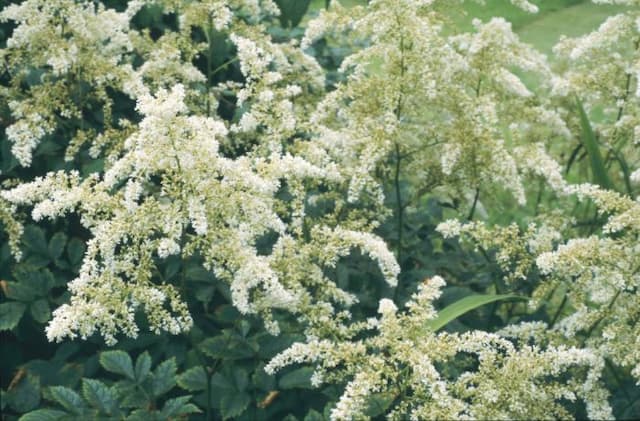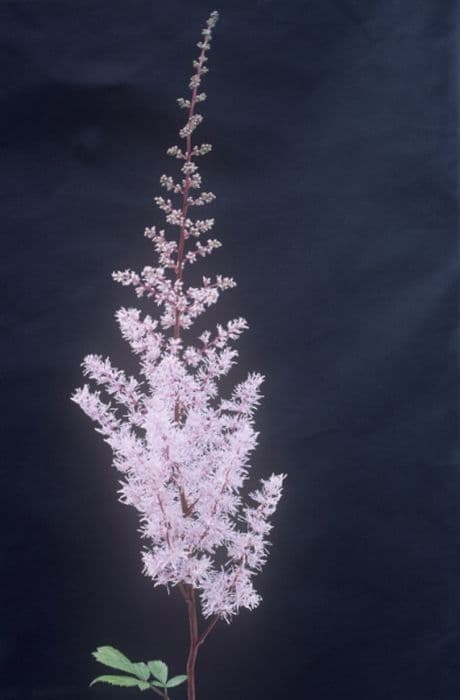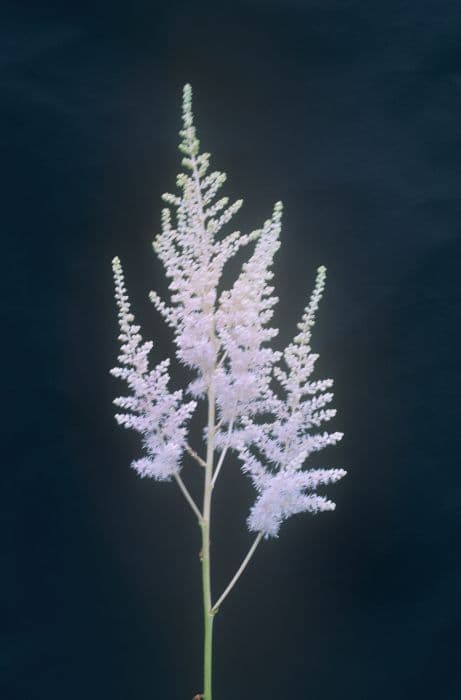Peach Melba Saxifrage Saxifraga 'Peach Melba' (7)

ABOUT
Saxifraga 'Peach Melba' presents a delightful visual with its foliage forming a compact, cushion-like mound. The leaves are small and rounded, with a slightly fleshy texture that hints at their succulent nature. They are typically bright green, setting a lush backdrop for the plant's standout feature—the flowers. The blooms are the true showstoppers, capturing the hues of a peach at the peak of ripeness. Each individual flower has delicate petals that radiate from the center, forming a shape that is reminiscent of miniature stars. These soft, yet vibrant, shades can include a spectrum of peach tones, from a pale, creamy blush to deeper sunset oranges. The flowers rise just above the foliage on slender stems, giving the plant an airy, graceful bearing that stands out in rock gardens or when used as an edging plant. Saxifraga 'Peach Melba' exudes a charming and quaint aesthetic that can warm any garden space with its pastel palette.
About this plant
 Names
NamesSynonyms
Peach Melba Saxifrage, Peach Melba Rockfoil
Common names
Saxifraga 'Peach Melba'.
 Toxicity
ToxicityTo humans
Saxifrage is generally not known to be toxic to humans. There are no commonly reported symptoms of poisoning associated with the ingestion of Saxifrage, as it is not considered a poisonous plant. Therefore, accidental ingestion of parts of Saxifraga 'Peach Melba' is unlikely to result in any significant toxicity or adverse health consequences.
To pets
Saxifrage is not typically toxic to pets either. There are no prevalent reports of Saxifrage causing poisoning symptoms in animals such as cats and dogs. Ingesting parts of the Saxifraga 'Peach Melba' plant should not lead to any severe toxicity or harmful effects in pets. However, as with any non-food item, ingestion of large amounts may cause gastrointestinal upset in some pets.
 Characteristics
CharacteristicsLife cycle
Perennials
Foliage type
Evergreen
Color of leaves
Green
Flower color
Peach
Height
0.5 feet (15 cm)
Spread
1 foot (30 cm)
Plant type
Herb
Hardiness zones
5
Native area
Europe
Benefits
 General Benefits
General Benefits- Decorative Appeal: Saxifraga 'Peach Melba', commonly known as Peach Melba Saxifrage, offers delicate flowers and foliage, enhancing the visual interest of gardens or indoor spaces.
- Low Maintenance: It requires minimal care, making it suitable for gardeners of all experience levels.
- Drought Tolerance: Once established, Peach Melba Saxifrage can tolerate periods of dryness, reducing the need for frequent watering.
- Cold Hardy: It can survive in colder temperatures, making it a viable option for various climates and extending its planting range.
- Ground Cover: The plant can spread over time, providing a beautiful and natural cover that can help reduce weed growth.
- Attracts Pollinators: The blossoms of Peach Melba Saxifrage attract bees and other beneficial pollinators, supporting local ecosystems.
- Versatile Planting: It is suitable for rockeries, alpine gardens, borders, and containers, providing flexibility in garden design and use of space.
 Medical Properties
Medical PropertiesThis plant is not used for medical purposes.
 Air-purifying Qualities
Air-purifying QualitiesThis plant is not specifically known for air purifying qualities.
 Other Uses
Other Uses- Saxifraga 'Peach Melba' can be used as a natural dye source for fabric and paper crafting projects due to the pigments in its petals.
- These plants can be incorporated into miniature gardens or fairy gardens to add a splash of color and create a whimsical landscape.
- Saxifraga 'Peach Melba' makes a suitable subject for botanical illustration and photography due to its unique appearance and vibrant colors.
- The plant can be used in educational settings to teach children about plant growth habits, ground cover species, and alpine flora.
- The petals of Saxifraga 'Peach Melba' can be pressed and used in decorative craft works such as making bookmarks, cards, or framed art.
- Gardeners and horticulturists might utilize Saxifraga 'Peach Melba' in breeding programs to develop new cultivars with desired horticultural traits.
- When potted, this plant can serve as a natural table centerpiece for outdoor events, adding an elegant and earthy touch to the decor.
- Saxifraga 'Peach Melba' can be used in culinary presentations, as a non-toxic, decorative garnish for dishes and drinks.
- It can be grown in living walls or vertical gardens to provide texture and color variation alongside other alpine plants.
- This plant can be used in the study of rock garden ecosystems or alpine ecology in schools or environmental programs.
Interesting Facts
 Feng Shui
Feng ShuiThe plant Saxifraga is not used in Feng Shui practice.
 Zodiac Sign Compitability
Zodiac Sign CompitabilityThe plant Saxifraga is not used in astrology practice.
 Plant Symbolism
Plant Symbolism- Endurance: Saxifraga, also known as "rockfoil," is known for its ability to grow in rocky, challenging conditions, symbolizing the ability to endure and thrive in the face of adversity.
- Perseverance: The plant's characteristic of growing and clinging to cliff sides and crevices signifies steadfastness and the perseverance to overcome obstacles.
- Tenacity: Just as the Saxifraga clings tightly to its habitat, it represents a tenacious grip on life and determination to survive.
- Protection: Historically, some Saxifraga species were believed to offer protection against witches, symbolizing warding off negative energy or influences.
- New Beginnings: The blooming of the delicate flowers from such a rugged plant may symbolize new beginnings or the start of something beautiful despite challenging beginnings.
- Hospitality: In some cultures, the Saxifraga is planted near homes to symbolize a welcoming environment and hospitality toward guests.
- Adaptation: The Saxifraga's capacity to adapt to harsh environments makes it a symbol of adaptability and resilience in various circumstances.
 Water
WaterMossy Saxifrage, commonly called 'Peach Melba,' prefers consistently moist soil, particularly during its growing season in the spring and summer. It should be watered once a week with approximately 8 ounces of water, ensuring the soil is damp but not waterlogged. During the winter, reduce watering to every other week, allowing the top inch of soil to dry out between waterings. Excessive water can lead to root rot, so it is crucial to provide good drainage.
 Light
LightMossy Saxifrage thrives in partial shade to full sun, as long as it's protected from the harsh midday sun. The ideal spot for a 'Peach Melba' is a location that receives morning sun followed by dappled light or partial shade in the afternoon to prevent leaf scorch.
 Temperature
TemperatureMossy Saxifrage, or 'Peach Melba,' favors cool to moderate temperatures and can survive in temperatures as low as 0 degrees Fahrenheit but not below, making it suitable for growing in USDA zones 4–8. The ideal growing temperature range for this plant is between 60 and 75 degrees Fahrenheit for optimal growth and blooming.
 Pruning
PruningPrune Mossy Saxifrage after flowering to maintain its compact shape and encourage denser foliage. Deadheading spent flowers promotes additional blooms and prevents self-seeding. The best time for pruning is late spring or early summer, immediately after the bloom cycle has completed.
 Cleaning
CleaningAs needed
 Soil
SoilPeach Melba Saxifrage thrives best in a soil mix that is well-draining, with a composition of 1 part peat, 1 part perlite, and 1 part loam. The ideal soil pH for this plant is slightly acidic to neutral, ranging between 6.1 and 7.2.
 Repotting
RepottingPeach Melba Saxifrage should be repotted every 2 to 3 years to refresh the soil and accommodate root growth. Spring is typically the best time for repotting this plant.
 Humidity & Misting
Humidity & MistingPeach Melba Saxifrage prefers moderate humidity levels, ideally between 50% to 70%. It can tolerate lower humidity, but consistency is key to keeping the plant healthy.
 Suitable locations
Suitable locationsIndoor
Place in bright, indirect light and maintain moderate humidity.
Outdoor
Grow in partial shade with well-draining soil; shelter from harsh sun.
Hardiness zone
6-9 USDA
 Life cycle
Life cycleSaxifraga 'Peach Melba,' commonly known as Peach Melba Saxifrage, begins its life cycle with seed germination where ideal conditions include moist, well-drained soil and a mix of light and shade. The seedlings develop into rosettes of leaves, and the plant establishes a strong root system. Vegetative growth follows, with the plant producing more leaves and developing a dense, mat-forming habit. Once mature, it flowers, typically in late spring to early summer, showcasing small, star-shaped flowers with peach and yellow hues. After pollination, the flowers eventually give way to seed capsules containing numerous tiny seeds, ready to disperse and start a new cycle. During winter, the plant exhibits dormancy, with growth slowing down and the plant focusing on surviving the colder temperatures until the cycle begins anew in spring.
 Propogation
PropogationPropogation time
Spring-Summer
Propogation: Saxifraga 'Peach Melba', commonly known as saxifrage, is typically propagated through division, which is the process of separating a plant into several pieces, each with its own root system. This is the most popular propagation method for this plant. The best time for this division is during the early spring as the plant emerges from dormancy or in late summer after the flowering period. To propagate saxifrage by division, remove the plant from the ground and gently tease apart the clumps into smaller sections, making sure that each new piece has a portion of the root system attached. These individual clumps can then be replanted in well-draining soil at the same depth they were originally growing. Keep the soil consistently moist but not waterlogged to encourage root development.









